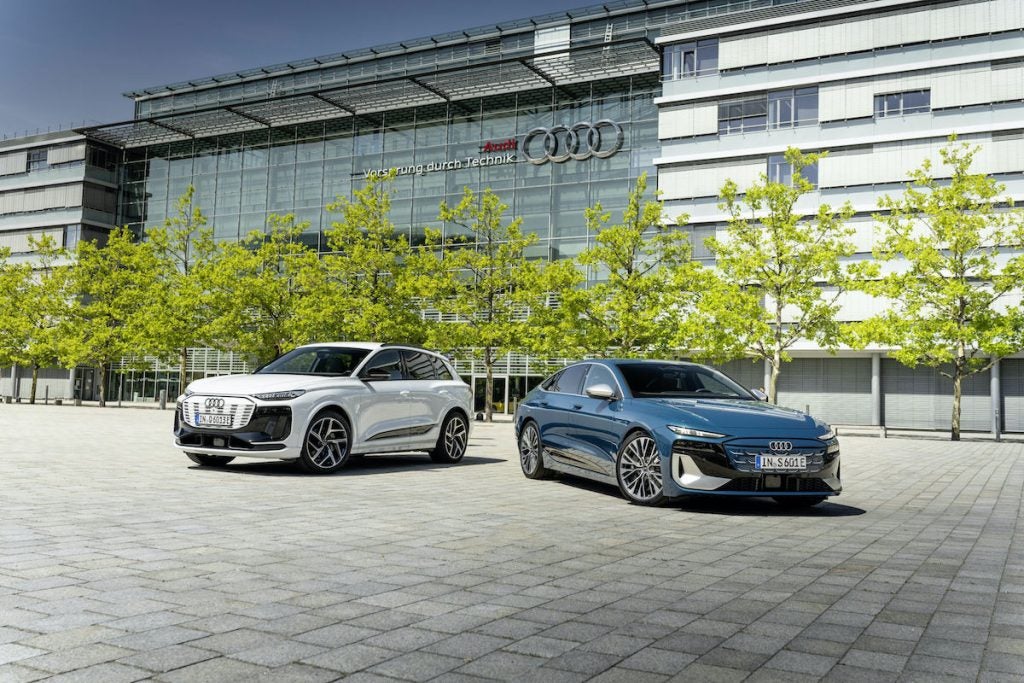 Of the three main vehicle markets in the developed world, Europe remains unique in that more than 85% of passenger cars (and an even higher proportion of light commercial vehicles) are sold with manual transmission. Although automatic transmissions are gaining a greater market share, especially in northern Europe (Germany, the UK, Benelux and Scandinavia) consumer resistance remains strong. Motorists with an interest in performance prefer changing gear for themselves, while those more concerned with economy still believe that – quite apart from their initial extra cost – automatic transmissions deliver inferior economy.
Of the three main vehicle markets in the developed world, Europe remains unique in that more than 85% of passenger cars (and an even higher proportion of light commercial vehicles) are sold with manual transmission. Although automatic transmissions are gaining a greater market share, especially in northern Europe (Germany, the UK, Benelux and Scandinavia) consumer resistance remains strong. Motorists with an interest in performance prefer changing gear for themselves, while those more concerned with economy still believe that – quite apart from their initial extra cost – automatic transmissions deliver inferior economy.
In addition to continuously variable transmissions, there is a growing European interest in clutchless transmissions, where the driver selects the ratio. At one extreme, such transmissions are aimed towards the bottom of the market, eliminating the tiresome need for clutch operation while avoiding the cost of a fully automatic unit. At the other extreme, paradoxically, they are aimed at sporting applications at the very top-end of the market, offering the drivers of some powerful models “Formula 1” type sequential gear selection.
These factors, plus increases in the operational longevity of clutches thanks to a number of technical advances, would indicate that the overall clutch market in Europe is, if anything, likely to fall slightly through this decade. However, many of the new transmission concepts are clutch-based rather than torque-based. For example, a clear trend is the increasing popularity of robotised gearboxes, requiring a clutch. These already feature on the Smart car, Renault Twingo and some Ferraris. Overall, fitment of robotised gearboxes across Europe are still well below 5%. Clutch manufacturers predict that the market for small cars with such gearboxes will increase as cost falls.
Shift-by-wire vehicles will also impact the clutch market. In 1996, BMW became the first vehicle maker to offer a clutchless manual gearbox on a commercial road car, the M3. Declutching and gear shifting is carried out electro-hydraulically following computations made by the engine management system and a new transmission control unit. A tap on the paddle, or a flick of the gear lever delivers instantaneous changes. For the vehicle maker, the attractions are that it offers the convenience of an automatic transmission but costs and weighs less thereby improving fuel economy and reducing emissions. It also delivers a perfect gearshift each time, effectively reducing clutch wear and tear and ultimately impacting on the aftermarket.
Longer life clutches impact the aftermarket
In the early 1980s, a clutch was expected to last about 35,000 miles. It now typically lasts around 100,000 miles, in many cases the working life of the car it was originally fitted in. Valeo engineers expect a clutch to last, on average, seven years. In 1990, the useful life of a clutch was more like four years. “It has changed the market image,” said Marc Monjardez, Manager of Valeo’s Aftermarket Clutch business. “When you buy a car that is four-five years old and the clutch gives up, you go back to the car dealership. But when the clutch wears out after seven years, people go to the independent dealer for replacement. So the trend is selling more clutches to the free, independent market than the OES (Original Equipment Supply) market. Our sales are declining in the car dealership network but we’re seeing stable and sometimes positive growth in the free market.”
How well do you really know your competitors?
Access the most comprehensive Company Profiles on the market, powered by GlobalData. Save hours of research. Gain competitive edge.

Thank you!
Your download email will arrive shortly
Not ready to buy yet? Download a free sample
We are confident about the unique quality of our Company Profiles. However, we want you to make the most beneficial decision for your business, so we offer a free sample that you can download by submitting the below form
By GlobalDataA critical move occurred in the early 1980s when manufacturers stopped using asbestos in clutches. A non-asbestos clutch features harder material, thereby extending product life. Another factor causing a decline in the replacement clutch market is the gradual shift from using clutch parts to clutch kits. A clutch kit makes the job of replacing a clutch easier for the DIY enthusiast and it means that the complete clutch is replaced, reducing the likelihood of further repairs a year or so later.
Professional installers and enthusiasts alike tend to prefer them. A clutch kit typically includes a clutch cover, plate and bearing, transmission mounts, buffers and bush, oil seals and flywheel locktab. The clutch cover itself is bolted to the engine flywheel and transmits engine torque through the clutch disc to the transmission input shaft. It consists of the clutch housing and the diaphragm spring which presses the axially movable pressure plate against the clutch disc and into the flywheel when the clutch is engaged.
|
Clutch manufacturers say the European aftermarket is falling by 2% annually. In the UK, there were 1.8 million clutches sold through the independent aftermarket in 1995. In 2001, that figure fell to 1.5 million units. The total UK aftermarket – OES and independent – totals about 2.3 million units annually.
This is compensated slightly in value terms by 1%. “It means that in the next few years, the clutch industry will reduce in volume terms but compensate slightly by value,” said Marc Monjardex. “It will also make the world of remanufacturers or second tier brands much more difficult.”
As noted earlier, the percentage of automatic transmissions naturally has had an effect on the size of the clutch market. Table 1 shows the forecast for the use of manual transmissions in cars produced in Western Europe, Japan and NAFTA allowing for the predicted growth of car production, which is expected to perform well below the world average.
For many years, manual gearboxes have gradually lost ground to automatic transmissions. In America and Japan, the modern automatic transmission has almost completely eclipsed the standard shift. Europeans, however, still prefer the manual gearbox. Here, the automatic transmission has only become widespread in the high-end vehicles.
Those who buy smaller cars still prefer a manual shift, whether for reasons of cost, fuel economy, performance or simply because they enjoy it.
European OE clutch market shares, 2001 (% of volume)
| Manufacturer |
% share
|
| ZF Sachs |
26
|
| Valeo |
24
|
| LuK |
22
|
| Borg & Beck |
12
|
| Others |
16
|
| Total |
100
|







